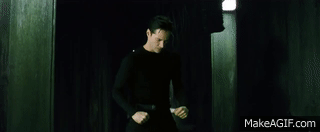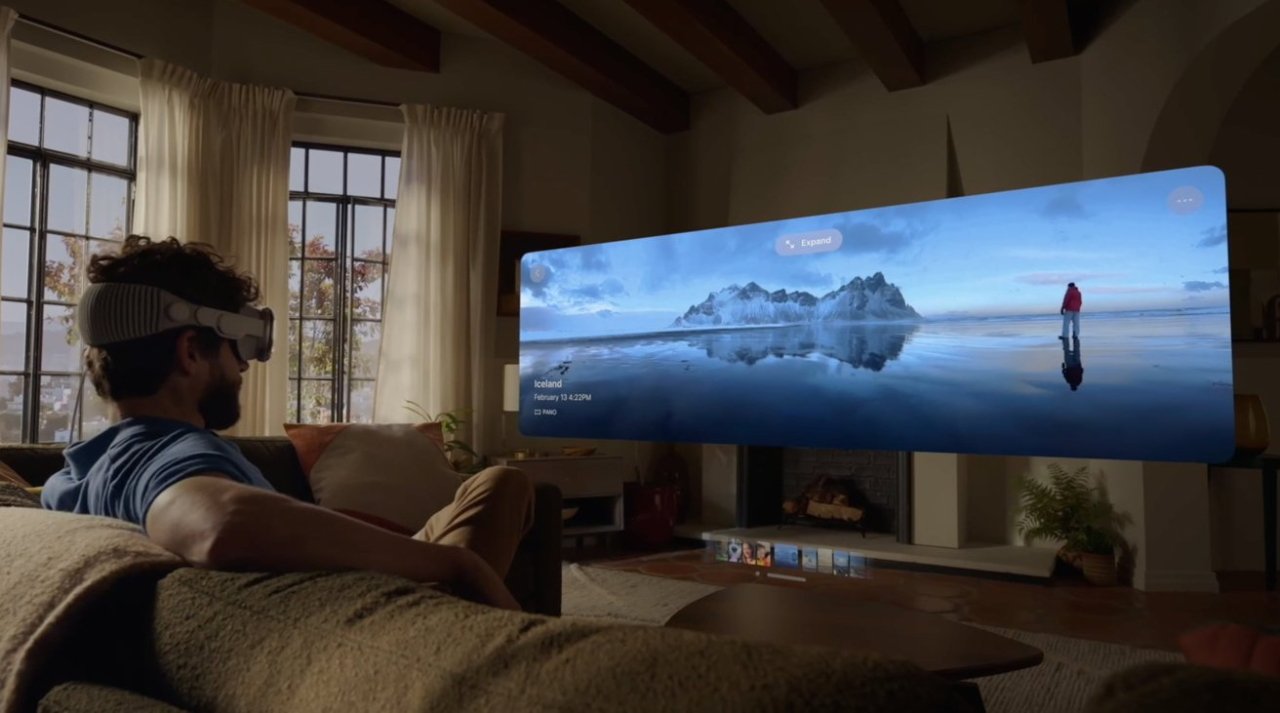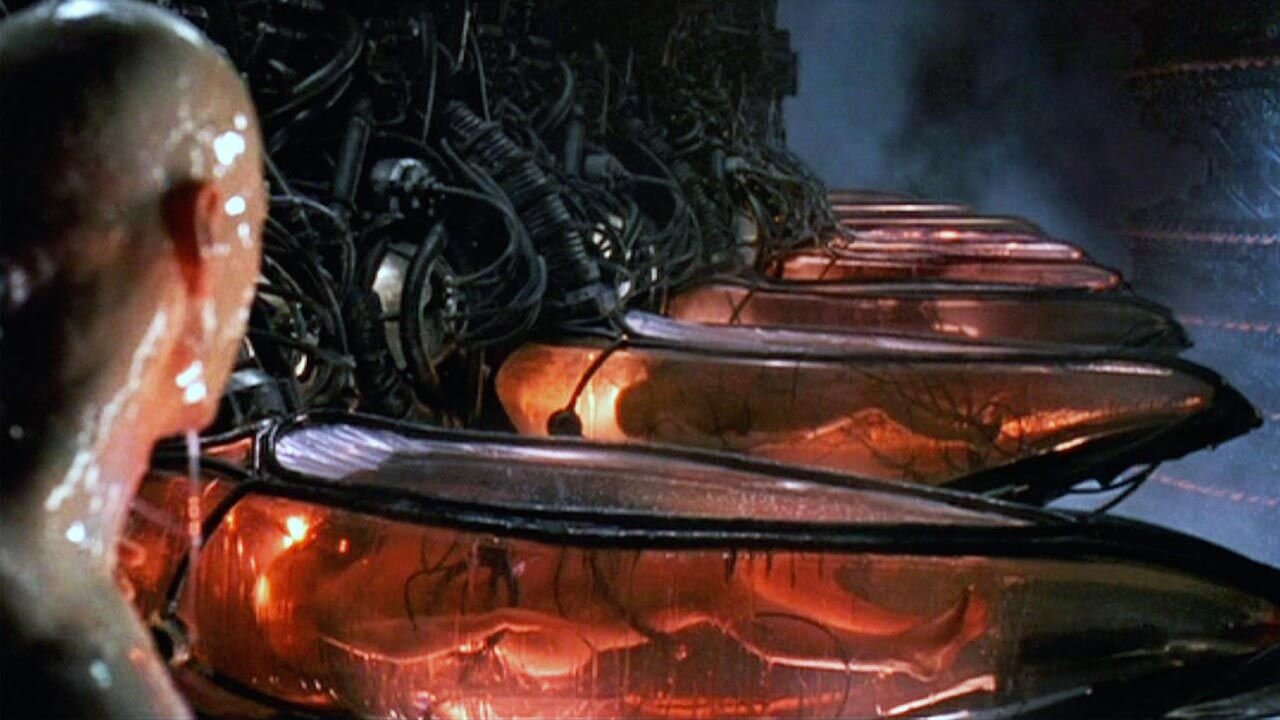I’m balancing on a tightrope, 3,000 feet above the Nordic fjords. As I glance down into the watery abyss, my stomach churns. Then, with a few flicks of my index finger, I’ve ditched Scandinavia for Pangea, where I’m frolicking with velociraptors who come within centimeters of my face to sniff and size me up. Next, I find myself in a present-day sanctuary for dehorned rhinos, so close that I can count individual eyelashes on the majestic creatures (also, rhinos have eyelashes?).
I have not been hop-scotching around the world with a passport and a DeLorean. I’m hanging out in Culver City, Calif., using Apple’s Vision Pro headset to transport. Earlier this month, the tech monolith invited me to one of the first screenings of its original studio content made for the device. My experience was jaw-dropping and emotional, one immediately followed by great anxiety about the implications the device could have on filmed entertainment and our larger social and cultural norms.
On a sleepy post-Oscars weekday, I was taken to an Apple office stacked with soothing beige fabrics. I was fitted for the device by a man with the bedside manner of a concierge doctor, locking the headset in place with both single and dual loop bands. I was advised that the weight of the Vision Pro should be evenly distributed between my forehead and neck (impossible, ironically, due the withering effect of years spent staring down at an iPhone).
After a full facial scan and a brief orientation, I quickly picked up the rhythm of the mixed-reality machine. A perfect replica of my field of vision appeared in the headset, along with a menu of apps. Anything I looked at directly became selectable. My index finger and thumb served as hardware.
My eyes were the cursor arrow, and my fingers were the mouse, it was explained. The VisionPro has been trotted out for tech bloggers and now lives on dazzling display in Apple stores around the world, but this was the company’s first time screening its original content for press. This included immersive shorts filmed with proprietary cameras, ones that offer dizzying panoramic views delivered with a depth and clarity that make your palms sweat.
The first piece of content played for me was James Cameron’s “Avatar: The Way of Water.” I was walked through steps to view the film in theater mode, which recreated the theatrical experience with alarming accuracy (I even chose my “seat,” dead center in the way back of a virtual movie house, as I would at any physical AMC location). I will spare you the superlatives, but watching Cameron’s Na’vi species whiz by my face on whaleback made me giddy. It evoked some of my earliest memories of going to the movies and brought with it a new kind of awe. I have been warned endlessly, especially as a reporter covering the film business, that virtual reality is going to shift paradigms — and watched every threat dissolve because the technology simply wasn’t there. In the Vision Pro, it feels like that moment is closer than ever before. People say the tech has existed in other or better forms, notably competitor Mark Zuckerberg in his shady review of the Apple device, but as a lay person? No, it hasn’t.
Next, I watched a studio session with Alicia Keys where she mashed up her song “No One” with Dawn Penn’s iconic reggae track “No No No.” My proximity to Keys left me a bit breathless (she has amazing skin, by the way, which instantly made me think that talent is going to have to get very comfortable being seen in this super hi-def medium — moisturize!). Lost in the music, it occurred to me that I was sitting between Dominic and an Apple publicist swaying and humming in an otherwise silent room. Only I could hear the audio. It made me self-conscious, but it was nothing I or any other consumer couldn’t eventually overcome. It also hit me that, one day, an industry like air travel could be transformed by technology like this. Rows and rows of people trying to escape the hell of modern flying by strapping into headsets, dancing or gaming or watching MMA on a dead silent plane while the flight crew looks on. I shared this scenario with a production company CEO this week, who had a blunt response: “We’re one step closer to becoming the fat blob people from Wall-E, who sit in recliners and watch TV their entire lives.” This won’t happen tomorrow, though, mostly because buying the device means ponying up nearly $4,000. It’s considerably cheaper to watch your seatback screen.
After the Nordic highliner, dinosaur romp and my time with the glamorous rhinos, I screened the first-ever sports film shot with Apple’s immersive cameras. Following the Major League Soccer cup, the film was shot in 8K 3D, offered a 180-degree view and came with spatial audio. As I watched a stationary camera erected atop the soccer goal and saw the entire field of players vividly fighting for glory, I heard cash registers ringing. The Vision Pro can and should immediately market itself as an unprecedented viewing experience for pro sports. At the end of the film, the winning soccer team popped several bottles of champagne. A cork flew so directly into the camera that I instinctively put my hands up to protect myself.
All in, I watched 30 minutes of footage. The device got hot, especially around my forehead, about halfway through. I barely noticed but that probably would be an issue over time. What was immediately clear is the opportunity filmmakers will have to make enthralling content for such a sensory device — and, perhaps, how many will decry it as the latest downfall of cinema as we know it. I thought about the serene forests I “walked” through during my demo, zooming in on raindrops hitting tree leaves, and how transformative Vision Pro content might be for people living with conditions like PTSD. Could it perhaps eventually cure my fear of heights through exposure therapy?
The most unsettling takeaway was a thought that still lingers. After I removed the device and walked back into my life, the real world seemed like a big disappointment for a while. Unenhanced, unrefined and with fewer possibilities. That’s great news for Apple, not so much for the humans strapped into the headset.






